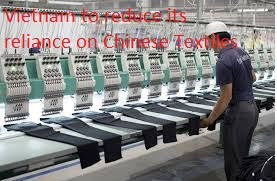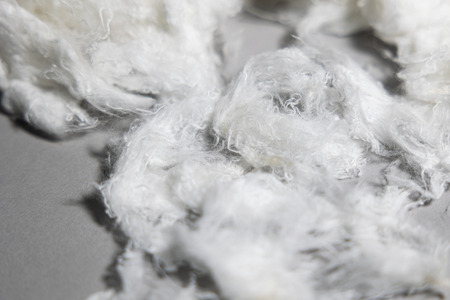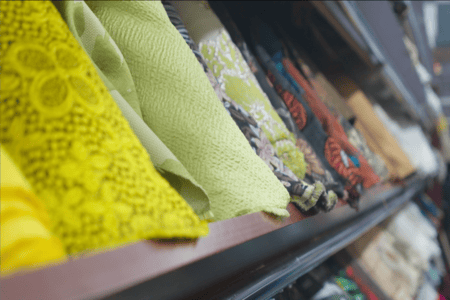
Vietnam to reduce its reliance on Chinese Textiles
YarnsandFibers News Bureau 2015-06-29 11:00:00 – HanoiAmerican trade negotiators demanding Vietnam, a major garments exporter to reduce its reliance on textiles made in China, which isn’t part of the trade pact, to get preferential market access to the U.S. The Senate is expected to pass on Wednesday legislation to expand President Barack Obama’s trade-negotiating powers after a bruising battle that has put pressure on proponents to show that the 12-nation Trans-Pacific Partnership will create jobs in the U.S.
The U.S., aiming to bolster American exporters, is stipulating that countries joining its new Pacific trade zone cut back on imports from China—a proposal that is meeting resistance from businesses and officials who say it will disrupt global supply chains.
The goal is to create new markets in Vietnam for the U.S. textile industry, which employs a quarter of a million Americans and exported $20 billion last year.
According to Eliza Levy, a spokeswoman for the National Council of Textile Organizations the U.S. and Mexico are especially large textile producers. Vietnam would simply have to shift its sourcing of yarns and fabrics from China to the U.S. and Mexico.
U.S. fashion brands oppose this approach, which they say ignores the complexities of global supply chains. Vietnam is the second-largest exporter of apparel and footwear to the U.S., behind China, with $13.1 billion in sales last year. But the country only produces enough fabric to meet a fifth of its needs and buys about $4.7 billion worth from China, or about half its total annual imports.
Clothing brands want duty-free entry to the U.S. for all goods made in the new free-trade zone, no matter where the fabric is produced. The trade negotiations could slash U.S. duties on many of Vietnam’s exports of garments and shoes to zero from between 7% and 32%.
Julia Hughes, president of the U.S. Fashion Industry Association, a trade group representing American brands, said that U.S. textile exporters won’t be able to feed Vietnam’s appetite in sufficient quantities, forcing garment producers there to continue to rely on Chinese fabrics. Vietnam isn’t going to get much duty-free access to the U.S. under current rules.
The U.S. garment industry argues that free trade will help the sector, which employs three million people, including designers and retail workers. In Congress, though, the debate over whether free trade imperils manufacturing employment has made the Pacific trade pact a contentious issue.
Trevor Kincaid, a deputy assistant U.S. trade representative, said that the deal will deliver new opportunities for American-based businesses, including opportunities related to textiles and apparel in Vietnam. The administration has a single-minded focus on getting the best possible deal for American workers and exports.
Vietnam has its own ideas. The country is working quickly to develop a homegrown textile industry, which would help get around the restrictions. Vietnam is seeking to reduce its reliance on imports from China for its garment industry to better benefit from TPP, said Phan Chi Dung, a senior official with Vietnam’s Ministry of Industry and Trade. However, he sees little chance of U.S. producers filling the void.
Companies from Hong Kong, South Korea and Taiwan recently have poured hundreds of millions of dollars into textile factories in Vietnam, hoping to later obtain tariff-free entry to the U.S. market.
TAL Apparel Ltd., a Hong Kong-based company which makes one in six dress shirts sold in the U.S., is building a $240 million textile plant in Vietnam, likely to complete by 2017, to feed its two garment factories there.
According to Roger Lee, chief executive of TAL Apparel, it will take five years for Vietnam’s textile industry to be self-sufficient. U.S. textile suppliers are too costly and far away from Asia to be competitive.
Chinese companies, too, are moving factories to Vietnam as wages rise at home and in anticipation of the Pacific trade zone.
Youngor Group, a Chinese apparel maker that runs a factory in Vietnam’s northern Nam Dinh province, is looking to source more textiles from Vietnam, rather than from its own factories in China, with an eye on exporting duty-free to the U.S.
Ou Kui, manager of Yanian Garment Co., a Chinese apparel company based in Hanoi, is also looking at producing zippers, buttons and other accessories to help investors from China meet local-content requirements.
Under pressure from U.S. brands, the trade agreement would allow Vietnam to continue to source from any country textiles and yarns on a short-supply list—inputs that aren’t produced in sufficient quantities inside the proposed trade zone.
Vietnam’s textile industry, if it expands rapidly enough, can even compete with U.S. textile exports to Mexico, which is also part of the Pacific trade discussions as per the recent congressional report.
Market Intelligence
Ask for free sample Report

experience
Customer Base
dedicated team
Countries Served Worldwide









